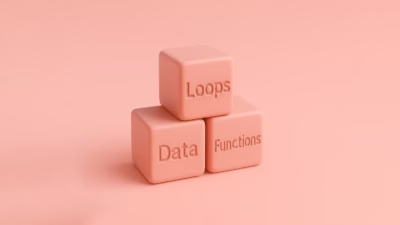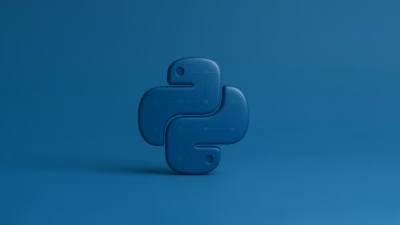You ever feel like learning data science is a bit like being dropped into a foreign country where the road signs are in six different languages, everyone’s shouting opinions, and somehow everyone’s right and wrong at the same time?
If you’re just starting out, the question comes up fast and hard:
“Should I learn R?”
It’s always somewhere in the list, right after Python, SQL, and maybe Excel if you’re from the “pivot table is life” crowd.
But R? It feels… fringe. Maybe even outdated. Or wildly niche. You see it mentioned in academic papers and by epidemiologists, but not so much by startup data teams or machine learning bros on Twitter (sorry, “X”).
So what’s the deal? Is R worth learning today, or is it one of those tools people only recommend out of nostalgia—like floppy disks or MySpace?
Let’s talk about it. Not from the mountaintop of internet opinion, but from the trenches—where people are trying to get stuff done with data.
The Emotional Context: You’re Not Just Picking a Language. You’re Picking a Learning Path.
Here’s a truth that took me an embarrassing amount of time to realize:
Choosing your first language isn’t just about features—it’s about vibe.
It’s about what community you’re walking into, what problems you’ll be solving, and how frustrating that early learning curve is going to feel.
When I first dabbled with R, I was also trying to figure out Python. R felt friendlier at times—more “plug and play.” But then I’d run into weird syntax like data %>% filter(x > 5) and feel like I was deciphering some secret code. Why the weird symbols? What’s a “tidyverse”? Why does everything sound like someone named it at a farmers’ market?
That confusion? Totally normal.
That gut feeling of, “Should I just stick to Python?” Also normal.
But here’s the twist: R isn’t obsolete. It’s just opinionated.
And sometimes that’s a really, really good thing.
What R Is Actually Good At (Spoiler: It’s Not Just Statistics)
R has a bit of a reputation problem. Most people associate it with statistics, academia, and people who still carry graphing calculators in their backpack “just in case.”
Fair. R was originally built for statisticians. But it’s evolved a lot in the last decade.
Let’s get this out of the way:
R shines at data wrangling, visualization, and exploratory analysis.
Especially when you’re using the tidyverse—a suite of packages that turns R into a cohesive, modern, and genuinely joyful experience (once you get the hang of it).
Need to:
- Quickly clean up messy data?
- Make charts that actually look good?
- Summarize datasets in ways that make sense at a glance?
R can often get you there faster than Python. Especially when you’re using packages like dplyr, ggplot2, and tidyr. These aren’t just tools—they’re a whole grammar for data.
I remember running a small project comparing voter registration data across U.S. counties. Pulling it in, reshaping it, graphing trends over time—all of it was faster in R than Python. Not because Python can’t do it. But because R was built for it.
It’s like cooking in a kitchen that’s already organized for your recipe. Everything’s where you need it. The spices are labeled. The knives are sharp.
Python’s great, don’t get me wrong. But sometimes it feels like walking into a warehouse and having to build your own kitchen first.
But Wait—Why Isn’t Everyone Using R Then?
Okay, so if R is so good at data analysis, why does Python dominate headlines, bootcamps, and job postings?
Simple answer: ecosystem and versatility.
Python isn’t just a data language. It’s a general-purpose programming language. That means:
- You can build web apps.
- Automate processes.
- Do deep learning and AI stuff.
- Work on software engineering-adjacent teams.
Companies like the flexibility. They can hire one language and solve multiple problems.
Also, the tooling for deployment, APIs, and production environments is just easier in Python. That’s not R’s strong suit.
So, Python gets the job listings. R? It gets the analysts and researchers.
And you know what? That’s okay.
Real Talk: Should You Learn R First?
Here’s the no-BS version.
You should consider R if:
- You’re in (or plan to be in) academia, public health, biology, psychology, or economics.
- You want to focus on data analysis, visualization, or communicating insights over building software.
- You’re intimidated by general-purpose programming and want to ease into coding in a more “data-first” way.
- You’ve seen ggplot2 charts and secretly thought, “Damn, I want my graphs to look like that.”
You should probably skip R (for now) if:
- You want to go deep into machine learning, software engineering, or data pipelines.
- You’re aiming for roles in tech startups, data engineering, or AI-heavy companies.
- You already know Python and don’t want to context-switch without a very specific need.
And here’s a sneaky little truth:
You can learn both eventually.
But trying to learn them both at the same time as a beginner? That’s a recipe for overwhelm.
Start with one. Go deep. Get your reps in. Then loop back to the other when curiosity (or necessity) pulls you there.
The Learning Curve: What It Feels Like to Learn R as a Beginner
Here’s the honest emotional arc I went through learning R:
- Huh, this looks different.
Everything felt foreign. The arrow assignment (<-) was weird. The functions didn’t read like English. I was suspicious. - Ooooh, tidyverse.
Once I founddplyrandggplot2, things clicked. Chaining commands with%>%felt natural. The code started to read like my thought process. - Wow, I’m doing real analysis.
I built dashboards withshiny, cleaned gnarly data withjanitor, and generated reports withrmarkdown. For the first time, it felt like I was in control—not just copying tutorials. - Ugh, this package won’t install.
R has its quirks. Sometimes packages fail. Sometimes the error messages are cryptic. But guess what? That happens in Python too. - I’m glad I learned this.
Even after moving most of my work into Python (because of job demands), I still reach for R when I want to understand a dataset quickly. It’s like an old friend—always good for a solid exploratory session.
Community Matters More Than You Think
One last thing that doesn’t get mentioned enough: the R community is ridiculously welcoming.
Especially if you’re:
- A beginner
- From an underrepresented group
- Not sure where to ask questions without being judged
You’ll find lots of support in the #rstats corner of the internet. People write blogs, share reproducible code, and genuinely want to help. It’s not perfect, but it is more accessible than a lot of tech spaces.
That matters. Because learning data is hard enough without feeling like an outsider.
tl;dr
- R is worth learning—but whether you should learn it first depends on your goals.
- It’s amazing for analysis, visualization, and tidy data workflows.
- It’s less ideal if you want to build production systems or deploy machine learning at scale.
- If your focus is understanding data and communicating insights, R might actually be easier than Python as a starting point.
- Start with one. Go deep. Add the other when you’re ready.
And if you’re still undecided?
Try this: Open RStudio. Load a small dataset. Try filter(), group_by(), and summarize(). Then plot something with ggplot2.
If that feels good—like “this makes sense, I could do more of this”—congrats. You’ve found your first data language. Doesn’t matter what Reddit says.
Because at the end of the day, the best tool isn’t the most popular one.
It’s the one that makes you excited to keep learning.





